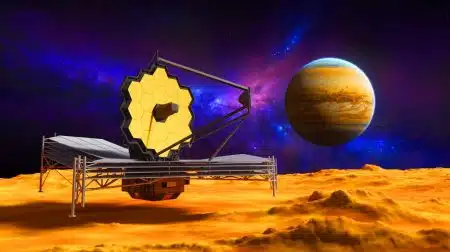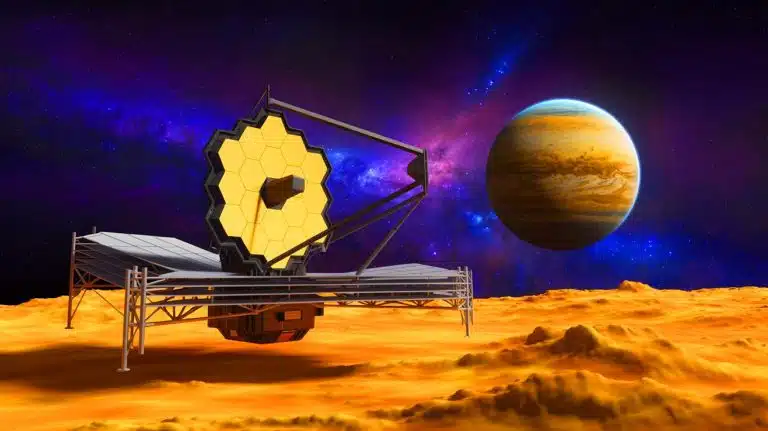| IN A NUTSHELL |
|
In the quest to find a second Earth, TRAPPIST-1e stands as a beacon of hope. Located just over 40 light-years away, this intriguing exoplanet has captured the attention of astronomers worldwide. The James Webb Space Telescope, with its advanced capabilities, has brought scientists closer to understanding whether TRAPPIST-1e could host conditions similar to Earth. While the mystery remains unsolved, recent discoveries have shed new light on the possibilities. In this article, we explore the complexities and potential of TRAPPIST-1e, a planet that continues to fascinate and perplex the scientific community.
TRAPPIST-1e: A Prime Candidate for Atmosphere Research
TRAPPIST-1e, the fourth planet in the TRAPPIST-1 system, lies in the habitable zone of its red dwarf star. This positioning makes it a prime candidate for the existence of liquid water, a crucial ingredient for life. However, the presence of water depends largely on whether the planet has an atmosphere. To investigate, an international team led by the University of St Andrews used the James Webb Space Telescope’s NIRSpec instrument. This near-infrared spectrograph analyzed starlight filtering through any potential atmosphere as TRAPPIST-1e transited its star.
The goal was to detect atmospheric gases that would absorb specific wavelengths of light, leaving a chemical signature. The discovery of such signatures would provide evidence of an atmosphere, potentially rich in gases like nitrogen. This step is crucial in determining the planet’s ability to support life as we know it. However, the complexity of this task is compounded by the nature of the TRAPPIST-1 star itself.
Challenges Posed by Stellar Activity
The observations of TRAPPIST-1e were not without challenges. The host star, a red dwarf, is particularly active, complicating data collection. Stellar activity, such as spots on the star's surface caused by magnetic fields, tended to obscure the signals the astronomers sought. These stellar spots interfere with the ability to isolate and identify the chemical signatures of an atmosphere.
Overcoming this required meticulous work. The team spent over a year refining their methods to correct for these disturbances. As Dr. Ryan MacDonald, a lecturer in extrasolar planets at the University of St Andrews, noted, "TRAPPIST-1e has long been considered one of the best candidates for searching for an atmosphere, but the variability of its star makes the task extremely difficult." Despite these difficulties, the research continues, driven by the potential for groundbreaking discoveries.
Two Plausible Scenarios Emerge
Following extensive analysis, scientists have proposed two main scenarios for TRAPPIST-1e. The first suggests the presence of a secondary atmosphere, possibly rich in heavy gases like nitrogen. This type of atmosphere could provide the conditions necessary for sustaining liquid water. Alternatively, TRAPPIST-1e might be a barren, rocky world without an atmosphere. Both possibilities hold significant implications for our understanding of exoplanets and their potential habitability.
Further observations are planned to explore these scenarios. As Dr. MacDonald highlighted, "In the coming years, we will increase from four observations by the James Webb Space Telescope to nearly twenty." Each additional transit observed will help clarify the composition of any existing atmosphere. This ongoing research is vital in determining whether TRAPPIST-1e is indeed habitable or merely an intriguing rock in space.
Implications for Future Exoplanet Research
The study of TRAPPIST-1e has broader implications for the field of exoplanet research. As astronomers continue to search for habitable worlds, the challenges faced with TRAPPIST-1e highlight the complexities involved in studying distant planets. The need for advanced technologies and refined techniques is evident as scientists strive to uncover the secrets of these alien worlds.
Moreover, the findings from TRAPPIST-1e may challenge existing theories about planetary formation and evolution. As researchers delve deeper, they may encounter unexpected phenomena that reshape current understanding. The pursuit of knowledge in this field is a testament to human curiosity and the desire to explore the universe beyond our own planet. With each new discovery, we come closer to answering the age-old question: Are we alone in the universe?
As the exploration of TRAPPIST-1e continues, it raises intriguing questions about the future of space exploration and the search for life beyond Earth. What other secrets do distant exoplanets hold, and how will they shape our understanding of the cosmos?
Did you like it? 4.5/5 (25)







Wow, a second Earth? 🌎 This could change everything we know about life in the universe!
This is mind-blowing! Do you think TRAPPIST-1e could really support life? 🌍